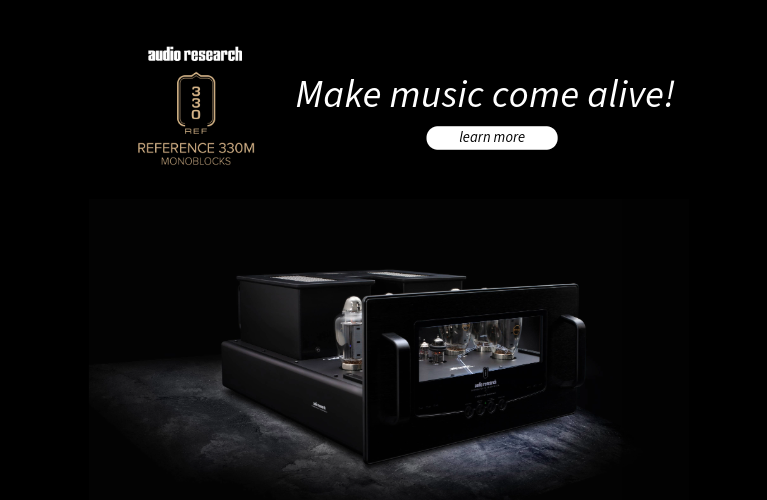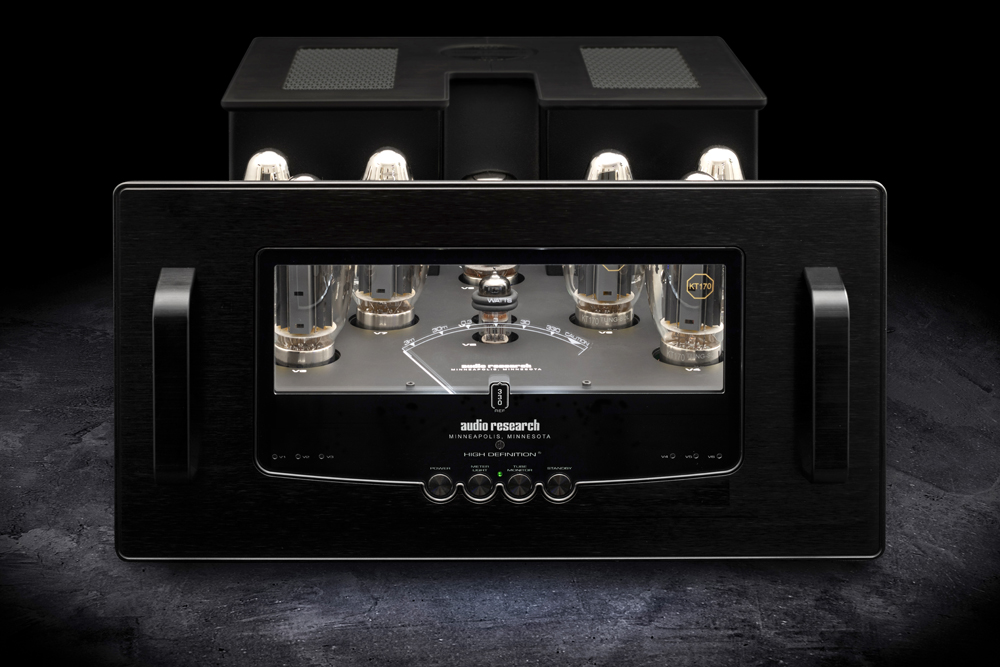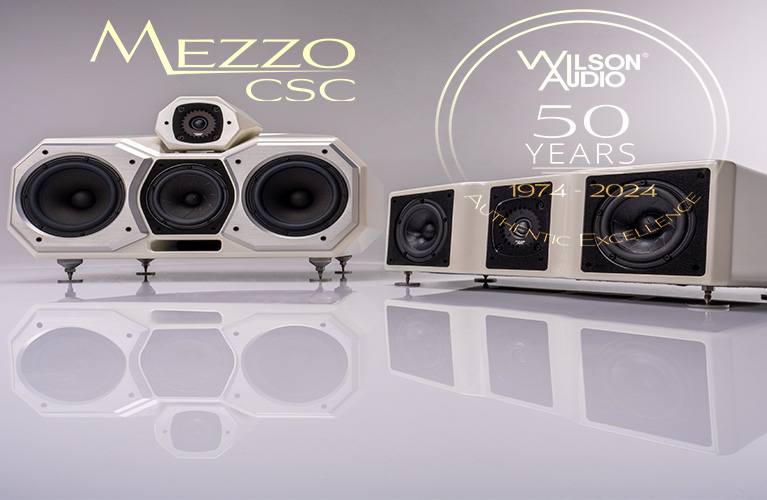Has it only been a few months since I met audio icon Bill Johnson? Nope, it just feels like it. More like three decades ago! Don’t even… It was the late 1990s and the Audio Research Corporation founder was in Sydney to present the company’s new-then Reference 600 flagship amplifiers to a captivated ensemble of audio enthusiasts. And yes, it could be argued that those near-30-years-young amps are, to this day, in the upper tier of performance and engineering dedication. Yet, the industry has moved on. We’ve seen advances in circuit sophistication, parts quality and manufacturing methodologies. Generations down the track, Audio Research is under new ownership – after several baton passes in a multi-member relay – with the company’s top-dog title now bestowed on the brand new Reference 330M monoblock amplifiers.
Genes are Stories, DNA is Language – Sam Kean
Audio Research amplification products are notorious for battleship-solid, high power valve-based designs. There have been exceptions with other technologies in products embracing valve/solid state, switching/MOS-FET hybrid and pure solid state circuitry. In my opinion, barring the valve/solid state hybrids, Audio Research’s excursions into other topologies have been somewhat less successful attempts at offering products to a wider audience. In an exceptionally illustrious timeline, remarkable products such as the SP-3 and SP-10 preamplifiers alongside the original D-150 and Reference 600 power amplifiers have become highly prized industry icons. There are strong arguments for a number of other standouts too.
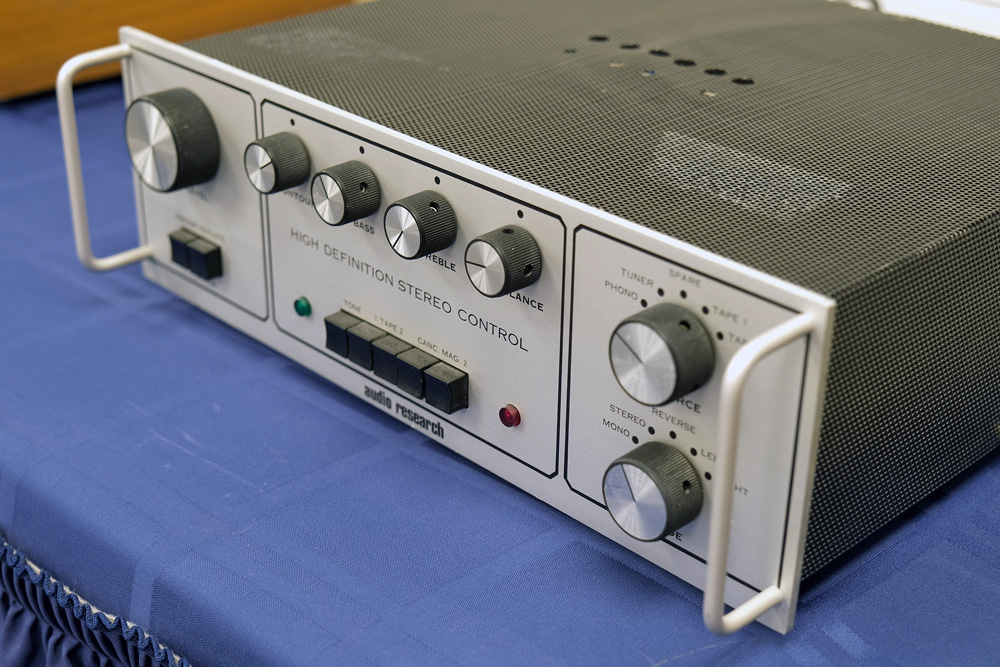
So, Audio Research’s most recent release is the spare-no-expense, fully balanced, push-pull Reference 330M monoblock amplifier. The 330M is fully handcrafted in the USA and, as alluded to above, is a product arising from one of the most prestigious and richest gene pools in the industry. So, yeah, it has some tall shoulders to climb up and stand on. Let’s unpack these new amplifiers and check-out what is similar and what has changed or, actually, evolved.
As the product name implies, the Reference 330M is rated at, you guessed it, 330 watts. It achieves this via a sextet of KT170 valves fed by a ECC83 and a 6H30 which governs the input stage, while the power supply is regulated and features a 6550 and another 6H30. All valves are hand selected and matched at the factory while their position atop the chassis has been marked to avoid erroneous placement.
Valve biasing is automatic via Audio Research’s own ‘Auto-Bias’ circuitry. The company quotes a 3000 hour life for the output valves and handily provides an internal hour meter, allowing close monitoring of actual usage (pure genius, I say). A variable speed fan controls internal temperature. Not once, even during a hot spell, did I ever hear the fan operating from anywhere near the listening position. I tried, but not a peep. Only when kneeling down close to the amps did I actually pick up on a very faint whirr. Fan anxiety is an assured non-event.
The 330M is a fully balanced design offering both single-ended RCA and balanced XLR connectivity while speaker outputs are via dedicated 8 ohms and 4 ohms high quality binding posts. In common with Reference series products, the 330M requires a 20A IEC cable (supplied). There are in/out mini-jack 12V triggers and an RS-232 remote control port. The review samples were provided in the traditional Audio Research silver while a rather striking black finish can be ordered as an option.
Audio Research engineers go as far as possible in terms of retaining in-house control of parts and assembly. The company appoints a specialist manufacturer to produce the Audio Research-designed transformers and capacitors. Also designed by Audio Research and custom manufactured by a partner supplier are the different types and gauges of internal wiring used across the various circuit sections. Said circuitry features 4-layer circuit boards produced in-house. Every component’s solder point is applied by hand by Audio Research crafts people. The various custom components are also extensively auditioned in order to ascertain their sonic influence upon a given circuit.
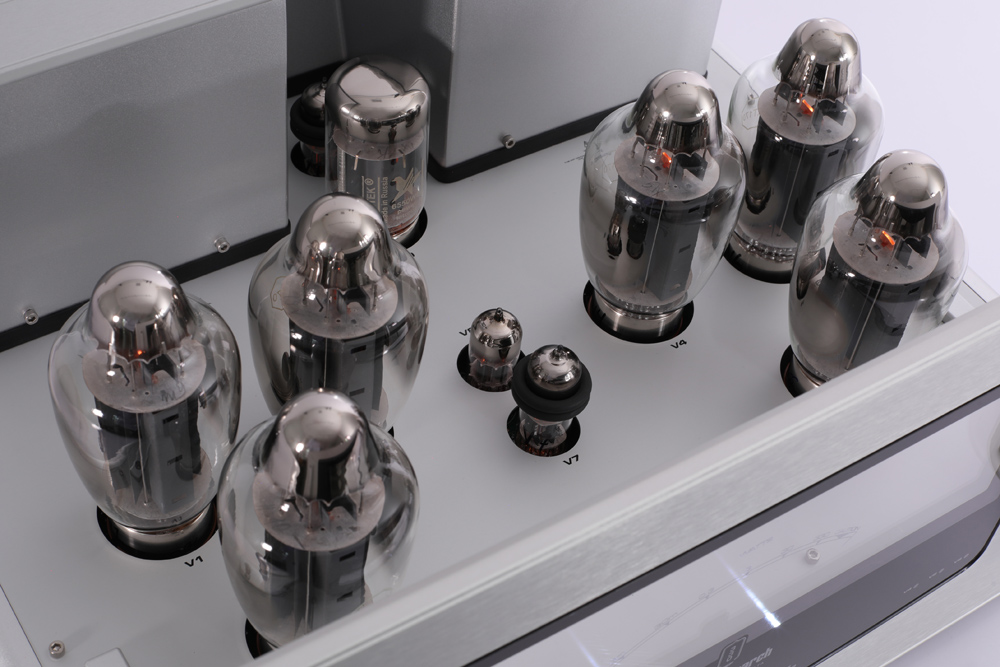
Aesthetically, the Reference 330M is a looker. The design retains the unique ‘Ghost Meters’ used across the newer Reference amplifiers, a design touch that is, in my opinion, super elegant. The actual meters are embedded within a clear glass panel, as if floating, and are LED-illuminated from below… a suspended mid-air apparition that seems to defy gravity while also allowing a clear view through to the valve bank. Said LED lighting can be dimmed or switched off altogether, if so preferred, but why would you? The meter action can also be defeated so the needles do not react to signal, in case your own ‘distraction meter’ is a tad too sensitive. Of course, at this price point and given its origin, the Reference 330M is, overall, beautifully designed and superbly assembled. Needless to say, there’s also skilful engineering at play under the bonnet.
Recently, I had a YouTube video ‘Talks’ chat/interview with longtime Audio Research representative and Brand Director Dave Gordon (link here SoundStageAustralia.com - Videos). Gordon is almost synonymous with Audio Research, having worked closely with Bill Johnson since starting with the company back in 1989. Through the decades since and the ownership changes, Gordon has remained a constant Audio Research ambassador. He provided interesting company status insights under Valerio Cora’s new ownership, shed light on his favourite Audio Research products, and shared design information on the Reference 330M. Below is a very short excerpt from the just-over-30-minute conversation (watch here):
The Reference 330M started off as the 320 back in 2022. It was meant to be a large version of the 160M. Val [Cora] took it to the next level. He said, “no, we’re not going to settle for just making it larger, we’re going to make it the best amplifier we possibly can. Engineers love to hear that… The 330M is the first input to output tube gain amplifier we’ve done in years and it’s putting out very, very high power, but it’s not putting out a tonne of heat. We’ve got six KT170 tubes and we’re using tube regulation… We don’t want to be too dogmatic, like it has to be all tube, has to be all solid state, has to be zero feedback, it depends on the circuit.
We showed the 320M, double the power of 160M, in Munich as a shell in 2022… and that was fine, except that we needed a little more engineering… Val brought in more engineering. We were really unafraid of pushing the envelope as far as performance and price-wise, without constraints. Our products as they get bigger, they get better, but the 330M gets better in an explosive way as far as resolution and dynamics. It’s able to deliver high power at low frequencies. The 330M controls and drives speakers like a big solid state amplifier. And the 330M simply outperforms the 750SEL in every way. In the 330M we’re using tube regulation which we haven’t done since our older series… we put in a new choke, totally new circuit boards, new transformers, we’re using fabulous new parts. You have to build from the ground up with these tubes. We built prototypes with KT150s and KT170s but we saw more potential with the KT170, but you have to really design around the tube. It’s a unique design unlike anything we’ve ever done before.
Points of Reference
I coupled the 330M monos to my reference Wilson Audio Alexia V and, as a second opinion loudspeaker, the beautiful Vermouth Audio Little Luccas Mk.II Limited Edition standmount. These excellent, very revealing, superbly musical, yet very different speakers provided a varied insight into the amplifiers’ overall sound quality capabilities. Each presented the M330s with a distinct challenge.
The large floorstander is a full-range 20 Hz to 20 kHz powerhouse with a tough impedance load through the bass region but this is somewhat tempered by above average sensitivity. In this scenario, an amplifier’s high current delivery capabilities are more important than outright power.
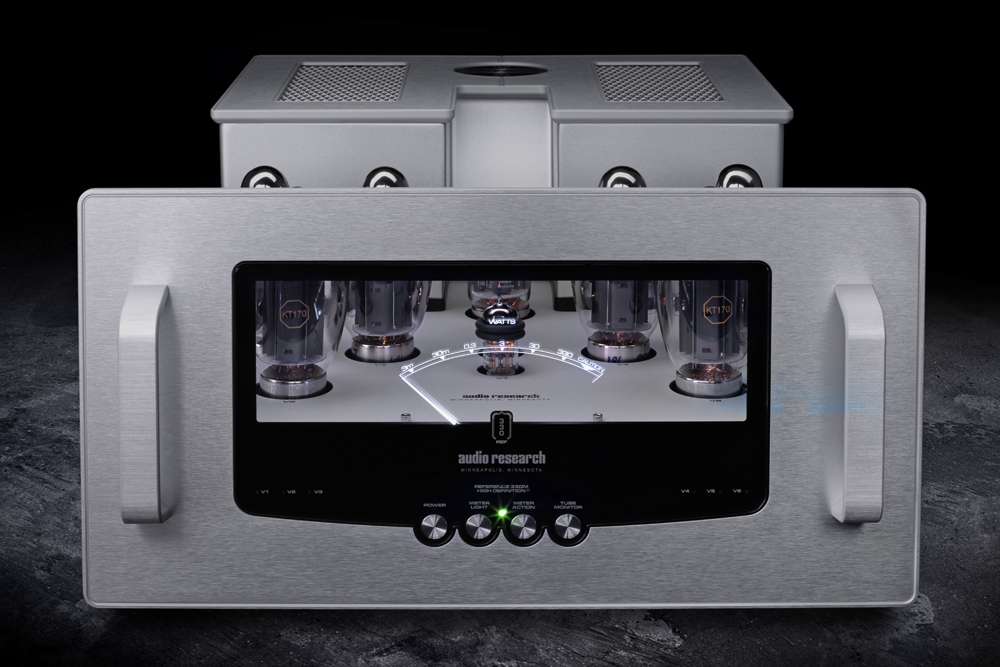
Conversely, the standmount is superbly benign across the impedance plot – said to be above 6.2 ohms across its frequency response – while having an average (some may argue just below average) sensitivity of 86dB at 1 kHz and probably slightly lower than that across a wider response. This is where an amplifier’s power output is more important than current drive.
First off, I thought I’d try a low frequency torture test in order to ascertain the REF 330Ms control and dynamic expression through that more challenging bandwidth portion. Geoff Castellucci’s cover of Simon and Garfunkel’s “The Sound(s) of Silence” has been doing the show rounds, no doubt due to its unique interpretation, its overall sound quality, and in particular, the recording’s bass depth. Early in the piece there’s a number of deep notes (keyboard?) that bookend Castellucci’s deep growl. My reference Wilson Audio Alexia V can dip down to the low 20 Hz point and the REF 330M reached down remarkably low to provide the appropriate weight to the track.
As good as that was, it must be said, in all fairness, that the extraordinary control and sheer bass output of my Gryphon Audio’s Antileon EVO, which is among the very best in the solid state world, could not quite be matched by the Reference 330M. Yet, the valve amp did an outstanding job and, as far as any valve design is concerned, the REF 330M stood as the most capable bass handler I’ve ever heard within the context of my system. As expected, it certainly outdid its brother Reference 160S which I reviewed back in March 2020 (review here), an amplifier which performed superbly in all areas, especially in Triode mode.
The 330M was also stellar in its handling of complex bass music, meaning it did not reduce the transient attack of bass guitar, or acoustic bass, or low frequency electronic music pyrotechnics. There was zero smearing of one note to the other – each was clearly defined. Yeah, with that sort of material, those Ghost Meters were certainly groovin’ and shakin’.
Take another bass challenge like Zander Zon’s “Accelerate” from the album Sonorous, where Zon’s finger picking scales the electric bass’ entire range from highs to very lows. The 330Ms held the notes tightly without stunting leading edge or bloom or extension. The track can be tricky to reproduce without smearing (as also mentioned above), with proper playback requiring a ‘fast’ amplifier coupled to speakers capable of excellent transient fidelity. Both those requirements were sorted here. Plus, the instrument’s textural context was given excellent precision in terms of timbre.
My bass torture tests were also presented to the Little Luccas Mk.II Limited Edition standmount speakers. While, of course, the depth of the lows was nowhere near as extended as the large floorstander (this should be needless to say, really), the control, definition, detail and slam was remarkable via the 330Ms’ drive and grip. Given the Little Luccas’ benign impedance, the result was outstanding and a credit to both products.
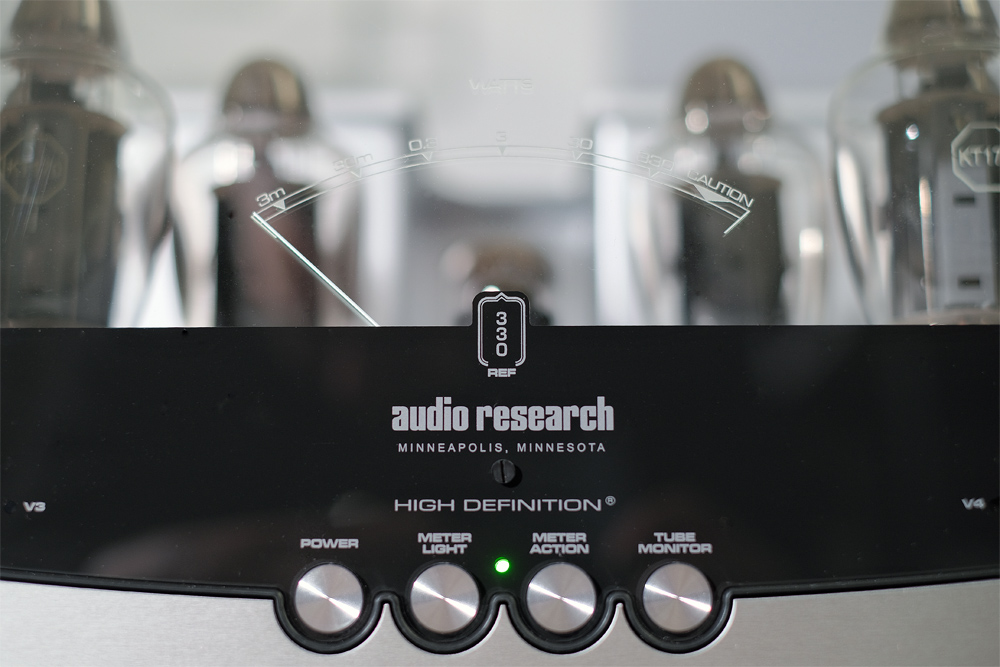
As you’d expect from one of the leaders in valve amplification design, the REF 330Ms balance the thin line between accuracy and romanticism with the finest skill. This is an scarce example of precision and truth cohabiting with beauty and deep tonal density.
Take Nina Nastasia and Jim White’s “There Is No Train” from the album You Follow Me, where Nastasia’s vocal delicacy is starkly juxtaposed with White’s uncommon blend of menacingly powerful kick drum and softly nuanced brushing. The track is both gentle and brutal, contrasting female vocal beauty and deep, percussive slam within a spacious acoustic. The 330Ms communicated those seemingly conflicting qualities in a most realistic and satisfying way.
The Reference 330Ms are very smooth operators. Not once did I hear brightness or off-kilter balance across the highs and midrange. This made intolerable recordings much more listenable, yet the 330Ms did not editorialise in a way which would taint all music with rose-coloured glasses. Their fidelity with good recordings shone through while bad ones were tolerable in a way that detached you from uncomfortable analysis and allowed enjoyment.
There was a sense of body through the mids, upper mids and lower high frequencies which rendered acoustic guitar warm and full. This sense of ease carried through to the higher registers of electric guitar and also acoustic bass. Pat Metheny’s title track from his MoonDial album provided appropriate intensity to his guitar picking while the notes relayed a true sense of presence which was totally removed from any thinness or shrillness. It was that full-bodied presentation, combined with the notes’ sharp leading edge, which produced Metheny’s “in-the-room” guitar sound via the 330Ms. The strings’ decay was also outstanding in terms of their reverberance and eventual ebbing.
The 330Ms’ spatial reproduction with orchestral music provided panoramic vistas of large orchestras in grand acoustic spaces. Mercury Masters’s Tchaikovsky: Festival Overture, Op. 49 release of the majestic 1812 with Antal Doráti conducting the Minneapolis Symphony Orchestra was a sweeping epic in terms of musical immersion in vast soundscapes. When the cannons blasted in, their power and shockwave was handled superbly by 330Ms while their decay trailed away naturally, providing sonic cues both in evidence of the cannons’ back-of-the-stage image position and the venue’s overall magnitude.
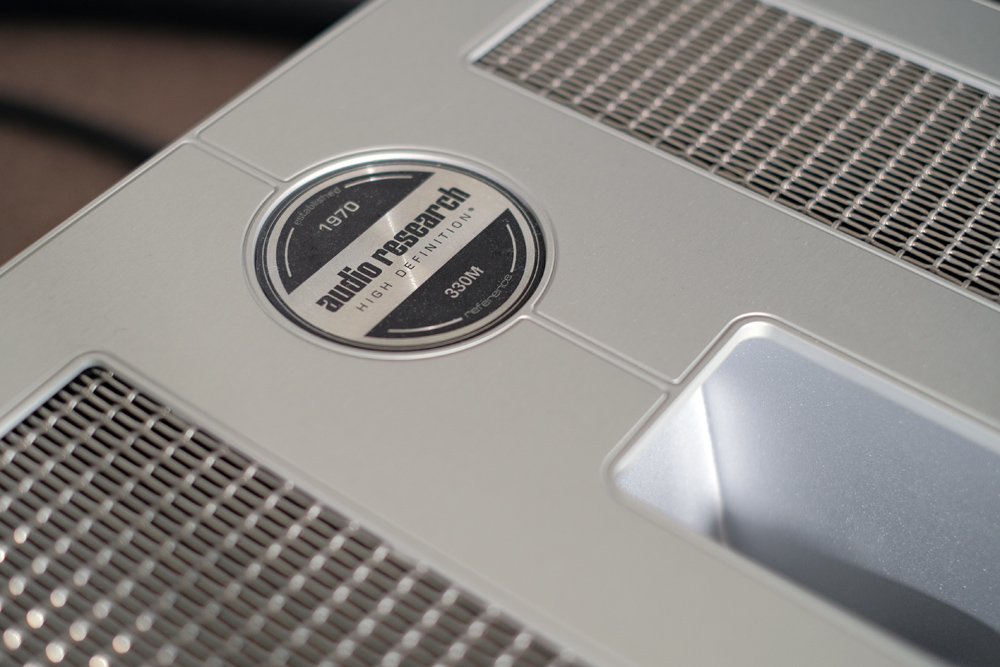
World Music fared superbly via the 330Ms. African music, for example, is diverse through its many regional styles, featuring assortments of acoustic, percussion and string instruments, often combined with strong vocals. On “Alkataou”, a track from African and Israeli duo The Touré-Raichel Collective on the album The Tel Aviv Session, the tonal qualities of the percussion, piano, bass and calabash were startingly precise. I love it when audio equipment is so true to the real instruments that it eases the listener into the music by removing yet another barrier in the journey towards the real thing. And who would have thought the calabash, a simple gourd shaped from a fruit shell, would sound so captivating? Plus, 330Ms excelled at presenting Vieux Farka Touré’s vocals within a realistically-focused image with stunning separation and presence. Super enjoyable.
I also tested the Reference 330Ms with a healthy – and rowdy – dollop of rock music, from Alternative, to Prog, to Stoner. The amplifiers handled those challenges as if just cruising, providing satisfaction across buzzing guitars, walloping drums, and toe-tapping electric bass. Lead singers were superbly separated from any mayhem in a way that coalesced with the music. No sweat here.
Conclusion
Let’s be straight. A buyer shopping at the Reference 330M price point of AU$170K for a stereo pair, will be auditioning them against a limited parade of worthy contenders. Critical choices will be made with the mating loudspeakers in mind, of course. The Reference 330Ms' excellent sonics aside, considerations will also encompass numerous other aspects of ownership impacting the final decision, not least Audio Research's strong brand caché. That kind of gravitas could incentivise the proverbial opening of the wallet… which will need to be a fat one.
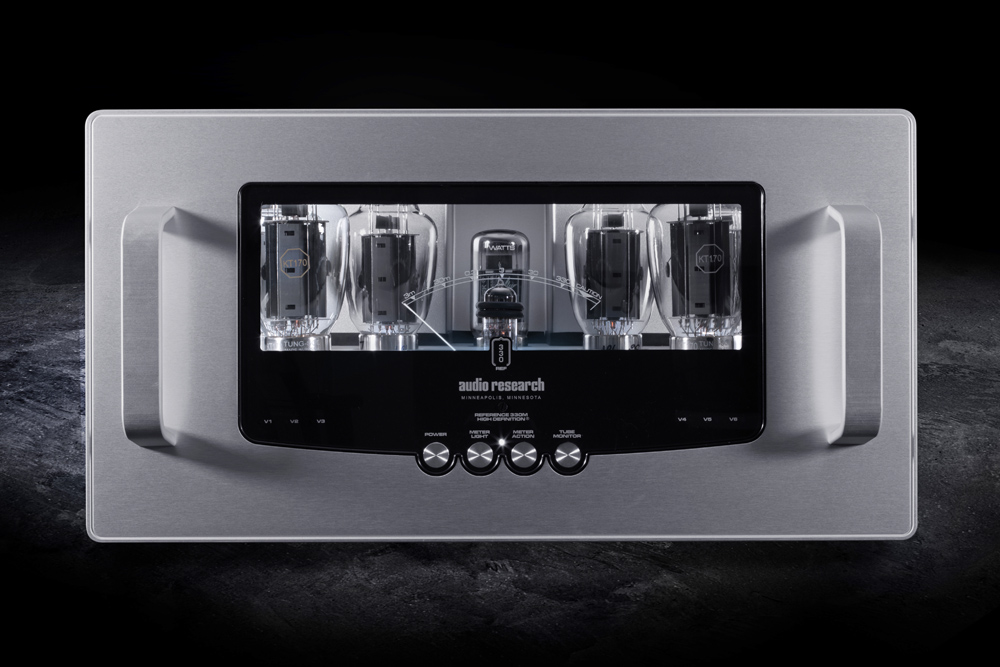
So, the new Audio Research Reference 330M monos reflect the over-half-century DNA of the revered American company. These flagship amplifiers are intelligently engineered, superbly built, elegantly styled and, most importantly, perform to a sonic standard which epitomises the meaning of the word ‘Reference’.
In terms of vacuum tube design… actually, no, side-by-side against any type of technology, the Audio Research 330M is a blindingly powerful valve-glow beacon of amplification excellence.
… Edgar Kramer
This email address is being protected from spambots. You need JavaScript enabled to view it.
Associated Equipment
- Speakers — Wilson Audio Alexia V, Axis Loudspeakers VoiceBox S (nearfield monitor), Vermouth Audio Little Luccas Mk.II Limited Edition, Atacama stands
- Amplifier — Gryphon Audio Antileon EVO
- Preamplifier — Supratek Cortese, Totaldac d1-triunity (periodically, direct to amplifier)
- Sources — Digital:432 EVO Aeon Mk.3 Reference Music Server/Roon Core, Yamaha CD-S2100 transport, Totaldac d1-triunity DAC. Analogue: Transrotor Crescendo with Konstant Studio controller, Reed 1X Tonearm with upgraded internal wiring, Shelter Harmony cartridge, The Funk Firm Houdini cartridge decoupler, Supratek Cortese & REDGUM Audio RGPH2 phono stages
- Processor — DEQX PreMate (part of arsenal/casual use)
- Cables — VYDA Laboratories Orion Silver Reference HFC IC and speaker cables, PSC Audio custom design XLR, Vermouth Audio Reference loom,Tubulus Concentus USB
- Audio Rack — SGR Audio Statement Model V, Aspire Audio Belgravia amplifier platform (customised for Gryphon Audio Antileon EVO), Stereotech Aluminar Dark 3-tier rack
- Acoustic Treatment — Vicoustic Multifuser Wood, Wavewood Ultra, Cinema Round Premium and Super Bass Extreme
- Miscellaneous — Silent Angel Bonn N8 Pro network switch, GigaWatt PF-1 EVO power strip, Les Davis Audio Viscoelastic CLD discs, Voodoo Cable Iso-Pods, Bocchino Audio Mecado, VRC Vinyl Record Cleaning system plus miscellaneous accessories
Audio Research Reference 330M Monoblock Amplifier
Price: AU$84,995 each
Australian Warranty: Three Years (90 days on tubes)
Australian Distributor: Synergy Audio
+61 3 9459 7474
www.synergyaudio.com
Audio Research
6655 Wedgwood Rd N Suite 115
Maple Grove
MN 55311
USA
+1 763 577 9700
www.audioresearch.com


